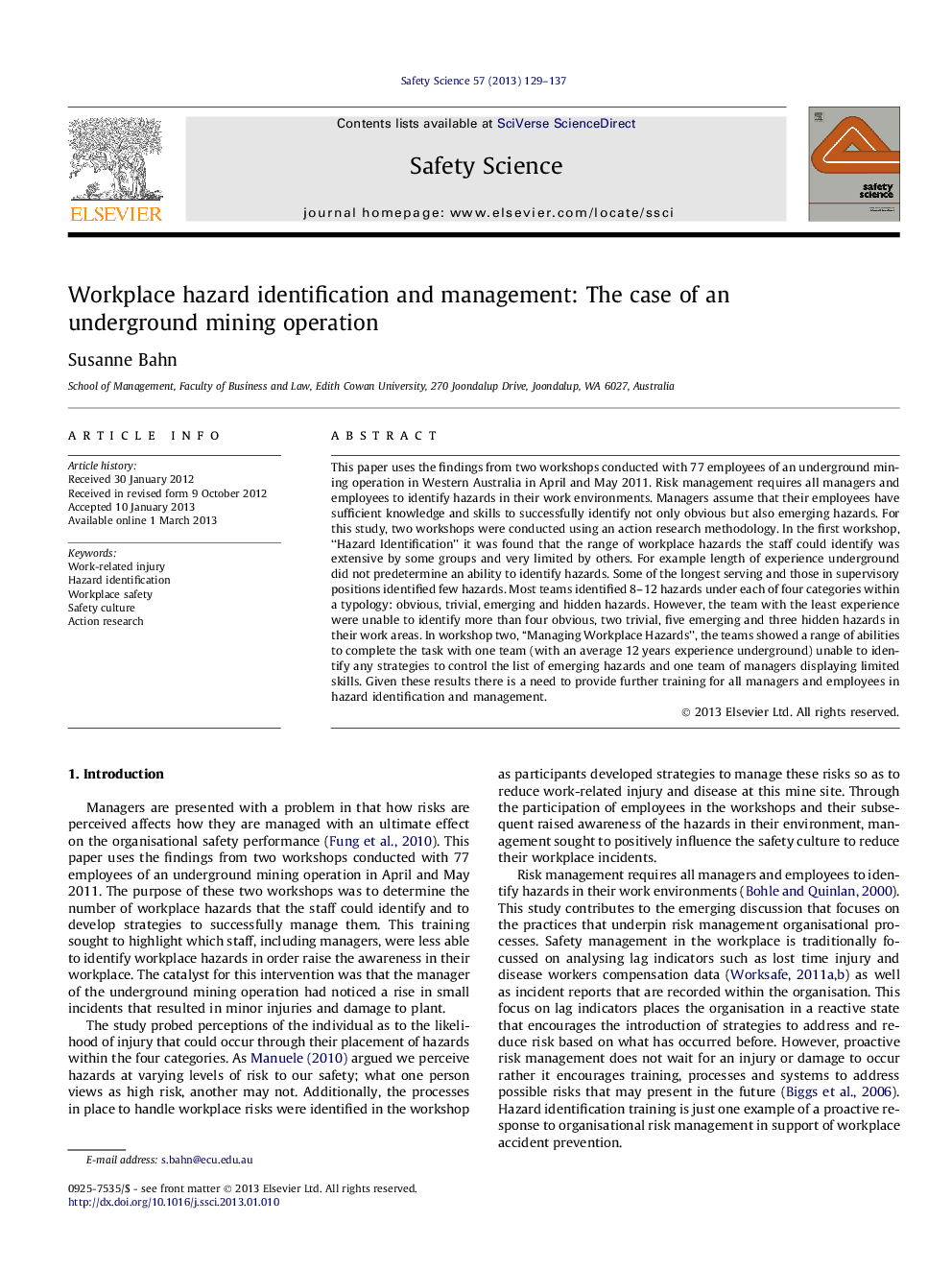| Article ID | Journal | Published Year | Pages | File Type |
|---|---|---|---|---|
| 589544 | Safety Science | 2013 | 9 Pages |
This paper uses the findings from two workshops conducted with 77 employees of an underground mining operation in Western Australia in April and May 2011. Risk management requires all managers and employees to identify hazards in their work environments. Managers assume that their employees have sufficient knowledge and skills to successfully identify not only obvious but also emerging hazards. For this study, two workshops were conducted using an action research methodology. In the first workshop, “Hazard Identification” it was found that the range of workplace hazards the staff could identify was extensive by some groups and very limited by others. For example length of experience underground did not predetermine an ability to identify hazards. Some of the longest serving and those in supervisory positions identified few hazards. Most teams identified 8–12 hazards under each of four categories within a typology: obvious, trivial, emerging and hidden hazards. However, the team with the least experience were unable to identify more than four obvious, two trivial, five emerging and three hidden hazards in their work areas. In workshop two, “Managing Workplace Hazards”, the teams showed a range of abilities to complete the task with one team (with an average 12 years experience underground) unable to identify any strategies to control the list of emerging hazards and one team of managers displaying limited skills. Given these results there is a need to provide further training for all managers and employees in hazard identification and management.
► The paper shows the inability of even experienced people to identify hazards. ► Workers lack skills to identify strategies to successfully manage hazards. ► Training in hazard identification is recommended.
